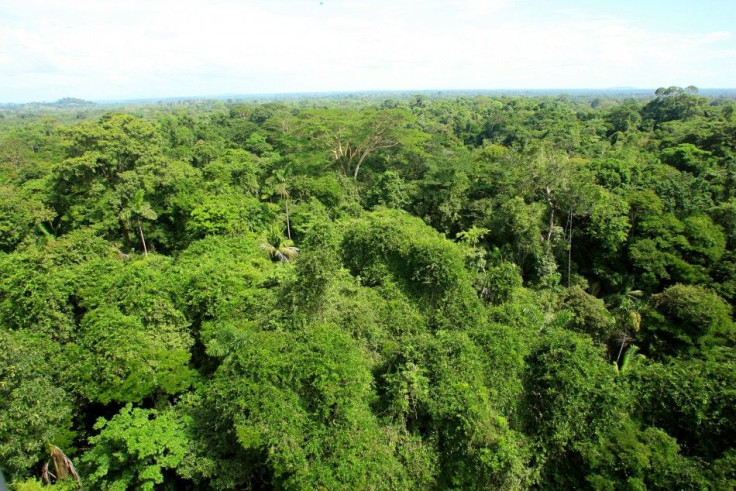Tropical Trees ‘Fix’ Themselves Quickly After Being Logged; Implications For Aforestation Projects

Scientists have discovered a new ability among trees in tropical forests, which allows them to speed up their own recovery by capturing nitrogen and carbon quickly after being logged.
According to researchers at the Smithsonian Tropical Research Institute, or STRI, in the Republic of Panama, the latest discovery, that tropical trees have the ability to capture or “fix” nitrogen from the air and release it into the soil helping the forest around them grow back, has comprehensive consequences for forest-restoration projects to reduce global warming.
“This is the first solid case showing how nitrogen fixation by tropical trees directly affects the rate of carbon recovery after agricultural fields are abandoned,” Jefferson Hall, a staff scientist at STRI, said in a statement. “Trees turn nitrogen fixation on and off according to the need for nitrogen in the system.”
Scientists said that the research, called the Agua Salud Project, is an experiment spanning more than a square mile of the Panama Canal watershed, which has as a surface area of 552,761 hectares -- about the size of the province of Herrera in Panama.
During the project, which marked the collaboration of scientists from Princeton University, Wageningen University of the Netherlands, University of Copenhagen, Yale University and STRI, researchers evaluated land-use options by measuring carbon storage, run-off and biodiversity to compare full-grown tropical forests, native trees in forest restoration plots and abandoned pastureland.
Scientists compared tree-growth rate and nitrogen levels growing on pastureland abandoned two, 12, 30 and 80 years ago with trees growing in mature forests. The observations revealed that tree species that "fixed" nitrogen from the atmosphere put on carbon weight up to nine times faster than their non-fixing counterparts during the early stages of forest restoration.
According to the researchers, tropical trees provided enough nitrogen fertilizer in the soil during the first 12 years of growth and helped facilitate the storage of 50,000 kilograms of carbon for each hectare.
“Diversity really matters,” said Sarah Batterman, the first author of the study published in Nature on Sunday. "Each tree species fixes nitrogen and carbon differently so species important at 12 years drop out or become less common at 30 years.”
“You can really see how different players contribute to the development of a mature tropical forest and the ecosystem services it provides.”
© Copyright IBTimes 2024. All rights reserved.






















